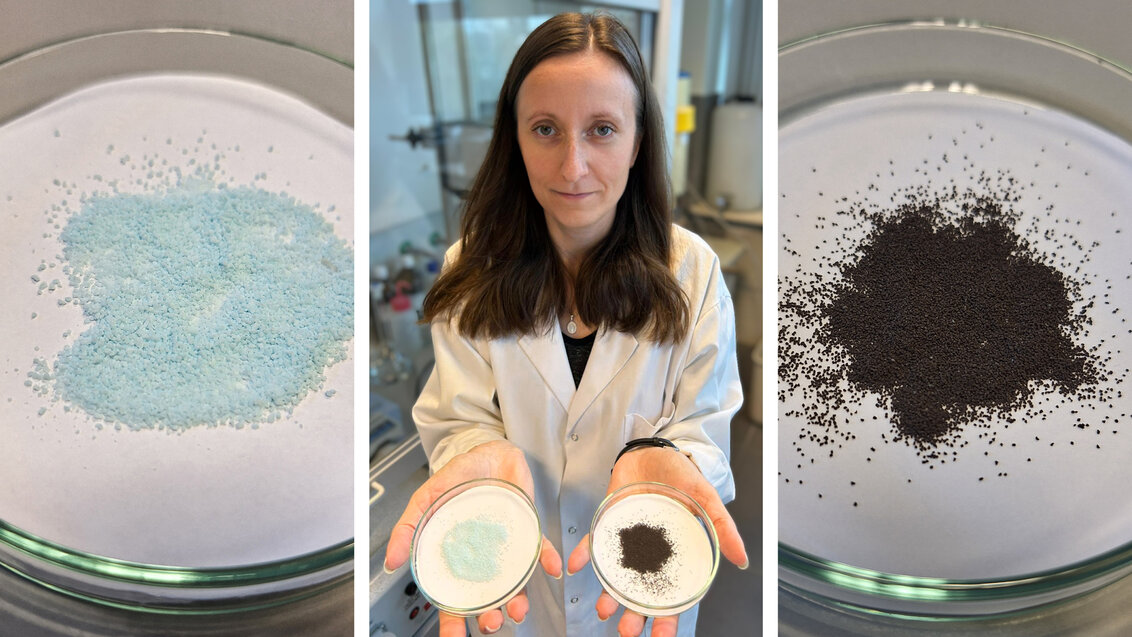For years now, scientists from the AGH University have been working on materials which could replace bones and help in bone regeneration. At present, they are trying to force said materials to fight bacteria.
A bone defect or a bone loss may occur as a result of an accident or a surgical intervention necessary due to e.g. a malignant disease. Regardless of the reason behind the defect, the same issues will arise – the dexterity, fitness, and regular functioning of a patient become limited. Unfortunately, the loss is not always able to regenerate on its own. The Bioceramics Team at the Faculty of Materials Science and Ceramics at the AGH University has been conducting research on innovative materials used for filling bone defects. Some of the developed biomaterials are currently being applied in medicine with great success. For example, FlexiOss®, i.e. a bone replacement biomaterial developed in cooperation with the Medical University of Lublin colloquially called “the artificial bone”, is largely based on microporous hydroxyapatite granules patented by the AGH University Bioceramics Team. Managed by Associate Professor Aneta Zima, the Team includes scientists such as: Professor Anna Ślósarczyk, Zofia Paszkiewicz, MSc Eng., Dr Eng. Joanna Czechowska, Szymon Skibiński, MSc Eng., Piotr Pańtak, MSc Eng., as well as Kinga Kowalska, MSc Eng.
The works on bone replacement materials are now focused on combining the positive characteristics of synthetic and natural compounds which make up hybrid materials. The basis for said biomaterials are often calcium phosphates and polymeric materials. When adequately applied, materials of this type can support and many times also induce the regeneration of bone tissue. Their final properties depend on the properties of their components and interactions between them. One of the calcium phosphates used in medicine is hydroxapatite, the chemical composition and mineralogical structure of which show a large similarity to the inorganic component of bone tissue.
Dr Eng. Joanna Czechowska from the Bioceramics Team at the AGH University has been recently given a grant for developing a hybrid material in the form of granules with antibacterial properties. Her project “New Self-assembling, hybrid hydroxyapatite-methylcellulose granules, modified with copper” obtained financing from the National Science Centre in the Miniatura 7 competition (2023/07/X/ST11/00705).
One of the inspirations for the project have been the Team’s research work on the use of hydroxyapatite-chitosan granules as components of bone replacement materials. Obtaining biomaterials in the form of granules is challenging and time-consuming. However, it was proven that if methylcellulose is used instead of chitosan, the material will take the form of granules by itself.
The said granule can be large enough to be visible to the naked eye. Their size may vary from 100 micrometres (0.1 millimetre) to even 1000 micrometres (1 millimetre). Most frequently, the researchers use the 300–400 micrometre granules, but the use of other sizes is also conceivable. After placing the granules onto the bone defect, they will be able to constitute a scaffold for the rebuilding tissue.
In the future, the hybrid granules being developed may be used as components of bone replacement materials. Since bone defects almost always have irregular shapes, especially those resulting from accidents, the most suitable for their rebuilding are easily formed materials which adapt to the shape of the defect but also precisely fill the space. Bone cements also belong to the group of materials which are surgically useful, as after combing the liquid and solid states, they have a consistency of an easily formed paste. The Bioceramics Team has been working on chemically bonded materials based on calcium phosphates for years now. Due to introducing granule hybrid aggregates into bone cements, we can obtain bone replacement materials, namely biomicroconcretes, with new interesting properties.
Dr Eng. Joanna Czechowska aims to develop a method for obtaining new hybrid granules based on hydroxyapatite and methylcellulose which would be antibacterial. For this purpose, the scientist is to use chitosan and copper which have antibacterial properties. It cannot be ruled out that some synergy effect will take place and as a result the hybrid biomaterials will be truly effective in fighting bacteria. The preliminary physicochemical and biological evaluation of hybrid materials will constitute the objective of the project.
“I will obtain granules based on methylcellulose and hydroxyapatite modified with chitosan and copped,” Dr Czechowska explained. “I predict that, theoretically, methylcellulose and hydroxyapatite will form hybrid systems, however, it will be essential to establish in what terms the addition of chitosan will influence material’s self-organisation process, as a polyelectrolyte complex may be formed. Within the project, I will also try to seek answers to the following questions: What composition will allow for reaching optimal physicochemical properties of the composite while maintaining the ability to self-organise? How will the addition of copper influence the physicochemical and biological parameters of hybrid granules? Will the obtained composite materials exhibit antibacterial properties? Understanding the granule formation mechanism and the interactions between components will allow not only for the optimalisation of the obtaining process but also for developing a way to introduce medication into them in the future.” As determined by the project manager, “during the implementation of the Miniatura 7 activity (2023/07/X/ST11/00705), it will be necessary to study a number of physicochemical and biological properties of developed biomaterials.”

 Pre-election meeting with a candidate for the position of rector
Pre-election meeting with a candidate for the position of rector  Agreement on cooperation with OPAL-RT
Agreement on cooperation with OPAL-RT  Krakow DIANA Accelerator consortium members with an agreement
Krakow DIANA Accelerator consortium members with an agreement  Meeting with the Consul General of Germany
Meeting with the Consul General of Germany  More Academic Sports Championships finals with medals for our students
More Academic Sports Championships finals with medals for our students  Launch of AGH University Student Construction Centre
Launch of AGH University Student Construction Centre  Bronze for our swimmers at Academic Championships
Bronze for our swimmers at Academic Championships  Smart mountains. AGH University scholar develops an intelligent mountain rescue aid system
Smart mountains. AGH University scholar develops an intelligent mountain rescue aid system